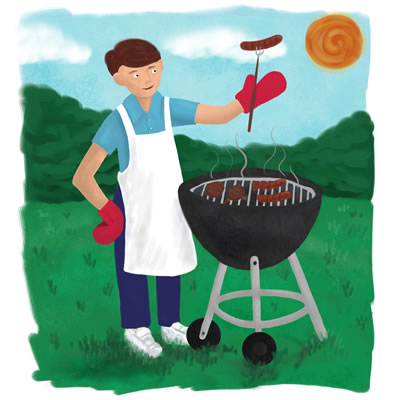 I recently got several "transfer" students.
I asked one, who has had three years of lessons, "Did your teacher ever mention the words 'phrase' or 'musicality'?" The answer? "No." Aargh!! We all know that music is not just notes and rhythm, but why aren't we all teaching that? |
Can You Teach Musicality?
|
Can you teach musicality? Yes! While some people seem "born talented," you can teach musicality.
When a student can play three notes, teach them to phrase those three notes. From the very beginning, insist that your students play with the same phrasing and musicality you do.
|
| Teaching Appoggiaturas |
|
One of the first things I teach students is: "When the direction of the phrase end goes down, you lift up."
Later I teach them about the ubiquitous appoggiatura:
 Play a phrase ending with an appoggiatura. Play a phrase ending with an appoggiatura. - Point out the feeling of increasing tension to the appoggiatura then the relaxation of the resolution.
- Play the phrase without the appoggiatura (it's dull); then play it without the resolution (it's not complete.)
- Repeat the phrase with exaggerated body language.
- Clench your hand for the feeling of tension, then think of a helium balloon floating up for release.
 Now here's the fun step: Now here's the fun step:
Instruct the student to stand in a doorway pressing his wrists very hard against the door jamb for about 15 seconds (tension), then step out of the doorway and feel his arms floating up for the resolution. - Now have them write in the dynamics and play appoggiaturas with motion and emotion. Always.
|
Flute Flash
| |
Tired of teaching that the note E has R4 (right hand 4th finger) down and that D sharp and E flat have no L1? I know I am.
One student's mom came up with the idea to name L1 (Tim) and R4 (Max) after boys in her daughter's class. When you play E, Tim and Max are in the room. But when you play D and D sharp, Tim is sent out of the room. It works!
|
| The Funnies |
|
 Chopin List Chopin List
- Schumann polish
- Bern-n-stein remover
- Batteries (Purcell)
- BeethOVEN cleaner
- Orange Schubert
- TchaiCOUGHsky drops
- marshMahlers
- Honey-nut Berlioz
- Cui-tips
|